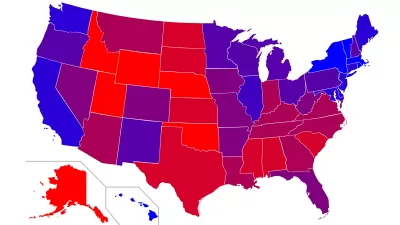Recently, an acquaintance asked me how to measure the walkability of a place he was visiting. I could have told him to just look at Walkscore (www.walkscore.com). Walkscore assigns scores to places based on their proximity to a wide variety of destinations. So if a place has a high walkscore AND a walkable street design (e.g. narrow streets, a grid system, etc.) it is probably pretty walkable.
Recently, an acquaintance asked me how to measure the walkability of a place he was visiting.
I could have told him to just look at Walkscore (www.walkscore.com). Walkscore assigns scores to places based on their proximity to a wide variety of destinations. So if a place has a high walkscore AND a walkable street design (e.g. narrow streets, a grid system, etc.) it is probably pretty walkable.
But of course, some places are near lots of destinations yet have very anti-pedestrian street designs. My old neighborhood in Jacksonville has high Walkscore ratings (at least for the neighborhood's main street, San Jose Blvd.). Nevertheless, it is not particularly walkable because the main street in question is an eight-lane speedway.
So how do you find out in advance if a neighborhood is less walkable than its Walkscore rating indicates? First, go to maps.google.com and click on the address you are interested in. On the upper left hand corner of the map, you should see a little human-like icon, which ideally should be yellow. Where the icon is yellow, you can drag it to the place you are interested in, see the street, and thus get a sense of how walkable the street is. You should be able to see how wide the street is, and whether there are sidewalks. Then you can drag the icon around to neighboring streets to get a sense of how walkable those streets are. On the other hand, where the icon is gray, this "Street View" feature is unavailable and you are out of luck. (You can still get an aerial view of the street by clicking on the "Satellite" link at the upper right hand corner of the map; however, aerial maps don't tell you nearly as much as "Street View"). Generally, Street View is available for larger cities in the United States and a few other countries. However, it is less available for smaller cities.

Manufactured Crisis: Losing the Nation’s Largest Source of Unsubsidized Affordable Housing
Manufactured housing communities have long been an affordable housing option for millions of people living in the U.S., but that affordability is disappearing rapidly. How did we get here?

Americans May Be Stuck — But Why?
Americans are moving a lot less than they once did, and that is a problem. While Yoni Applebaum, in his highly-publicized article Stuck, gets the reasons badly wrong, it's still important to ask: why are we moving so much less than before?

Using Old Oil and Gas Wells for Green Energy Storage
Penn State researchers have found that repurposing abandoned oil and gas wells for geothermal-assisted compressed-air energy storage can boost efficiency, reduce environmental risks, and support clean energy and job transitions.

Updating LA’s Tree Rules Could Bring More Shade to Underserved Neighborhoods
A new USC study finds that relaxing Los Angeles’ outdated tree planting guidelines could significantly expand urban tree canopy and reduce shade disparities in lower-income neighborhoods, though infrastructure investments are also needed.

California's Canal Solar Projects Aim to Conserve Resources and Expand Clean Energy
California’s Project Nexus has begun generating electricity from solar panels installed over irrigation canals, with researchers and state agencies exploring statewide expansion to conserve water and boost clean energy production.

HHS Staff Cuts Gut Energy Assistance Program
The full staff of a federal program that distributes heating and cooling assistance for low-income families was laid off, jeopardizing the program’s operations.
Urban Design for Planners 1: Software Tools
This six-course series explores essential urban design concepts using open source software and equips planners with the tools they need to participate fully in the urban design process.
Planning for Universal Design
Learn the tools for implementing Universal Design in planning regulations.
Heyer Gruel & Associates PA
City of Moreno Valley
Institute for Housing and Urban Development Studies (IHS)
City of Grandview
Harvard GSD Executive Education
Salt Lake City
NYU Wagner Graduate School of Public Service
City of Cambridge, Maryland






























